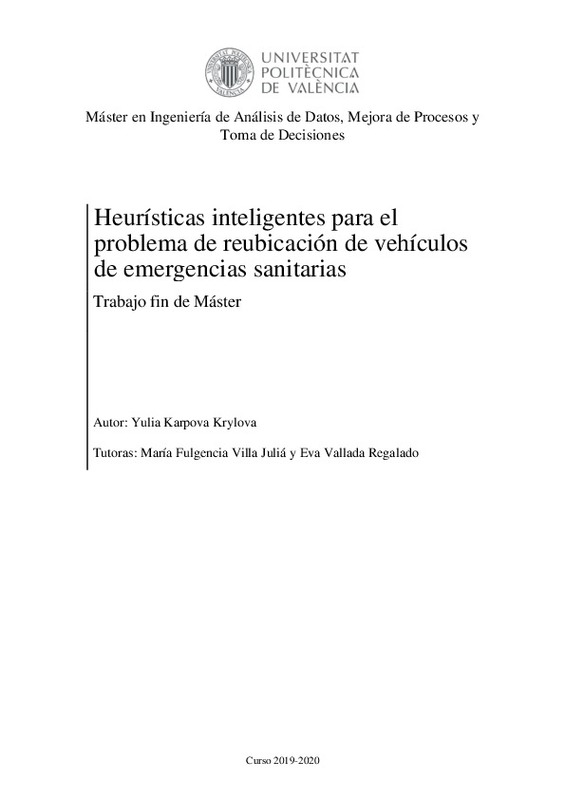|
Resumen:
|
[ES] El principal objetivo de los servicios de urgencias y emergencias extrahospitalarias es brindar una atención cualificada en el menor tiempo posible. Es esencial ubicar
estratégicamente las bases donde se localizan ...[+]
[ES] El principal objetivo de los servicios de urgencias y emergencias extrahospitalarias es brindar una atención cualificada en el menor tiempo posible. Es esencial ubicar
estratégicamente las bases donde se localizan los vehículos de emergencia, para poder cubrir el mayor número de puntos de demanda en un tiempo razonable. Aun en el caso
de contar con la ubicación óptima de los vehículos, a medida que estos se mueven para atender emergencias, algunas zonas podrían quedarse sin cobertura, siendo difícil
mantener un nivel de servicio adecuado. Con un mayor número de vehículos se podría resolver este problema, pero hay que tener en cuenta que esto implicaría una gran
inversión inicial y unos costes operativos elevados, por ello, no es una opción conveniente. Una solución alternativa sería reubicar los vehículos disponibles para
alcanzar la mayor cobertura posible. Obtener la solución óptima en un tiempo razonable no es viable para este problema. Por ello, en este trabajo se aborda el problema de
reubicación de ambulancias mediante el diseño y desarrollo de herramientas heurísticas inteligentes. Se resuelve un caso real, del Servicio de Emergencias Sanitarias de la
provincia de Valencia, con un previo análisis estadístico de los datos históricos de las emergencias, con la finalidad de obtener información relevante, que posteriormente se
utiliza para desarrollar las heurísticas.
[-]
[EN] The main objective of the emergency services and out-of-hospital emergencies is to provide qualified care in the shortest possible time. It is essential to strategically locate
the bases where emergency vehicles are ...[+]
[EN] The main objective of the emergency services and out-of-hospital emergencies is to provide qualified care in the shortest possible time. It is essential to strategically locate
the bases where emergency vehicles are located in order to cover the greatest number of demand points in a reasonable time. Even in the case of having the optimal location
of the vehicles, as they move to attend to emergencies, some areas could be left without coverage, making it difficult to maintain an adequate level of service. With a greater
number of vehicles, this problem could be solved, but it must be considered that this would imply a large initial investment and high operating costs, therefore, it is not a
suitable option. Relocating the available vehicles to achieve the highest possible coverage would be an alternative solution. Obtaining the optimal solution in a
reasonable time is not feasible in this case. For this reason, this work addresses the problem of ambulance relocation through the design and development of intelligent
heuristic tools. A real case is solved, from the Health Emergencies Service of the province of Valencia, with a previous statistical analysis of the historical data of the
emergencies, in order to obtain relevant information, which is later used to develop the heuristics.
[-]
|







